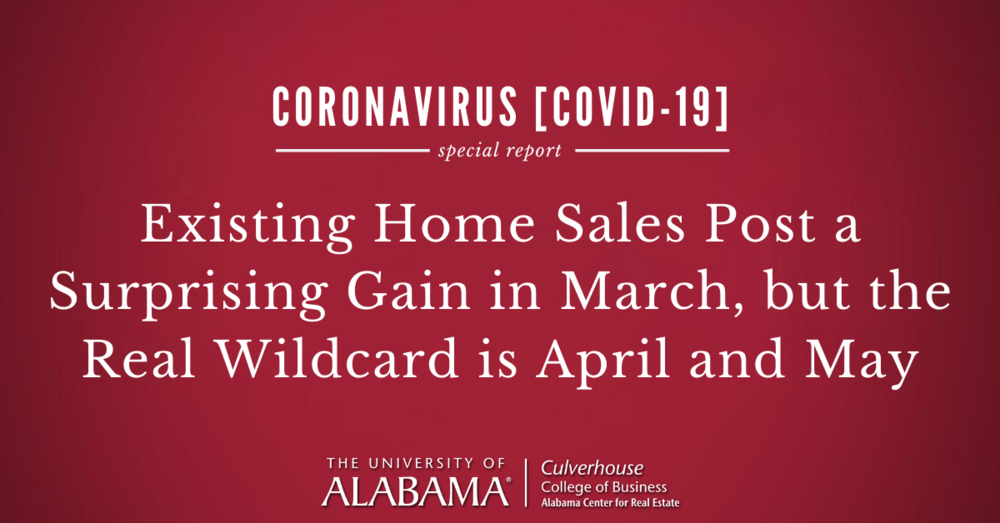Existing home sales nationwide increased slightly in March, even as a decline was expected due to the impact of COVID-19. According to the National Association of Realtors (NAR), total sales increased 3.8% year-over-year from approximately 400,000 to 415,000 closed transactions. However, the seasonally adjusted annual rate declined 8.5% from February 2020. (NAR uses the seasonally adjusted rate to factor out seasonal variations in sales activity such as volume being higher in the summer due to family buying patterns.) While sales are currently up 7.1% year-to-date, they are likely to moderate amid the coronavirus pandemic.
The nationwide median existing-home price increased 8% in March, marking 97 consecutive months of year-over-year gains. The nationwide median sales price is now up 7.7% year-to-date, and many experts believe that prices are likely to remain stable in the months ahead, very much unlike the housing crisis of 2008 when market conditions and underlying fundamentals were quite different.
Lawrence Yun, chief economist for the National Association of Realtors, said about the seasonally adjusted annual rate decline: “Unfortunately, we knew home sales would wane in March due to the coronavirus outbreak. More temporary interruptions to home sales should be expected in the next couple of months, though home prices will still likely rise.”
Tight inventory continued as total homes listed for sale decreased 10.2% from one year ago. Months of supply dropped from 3.9 to 3.4, reflecting a continued seller’s market at the nationwide level. Tight inventory levels played a significant role in sustained home price appreciation in recent years, and is likely to continue as new listings are down significantly due to the COVID-19 pandemic.
“Earlier in the year, we watched inventory gradually tick upward but with the current quarantine recommendations in place, fewer sellers are listing homes, which will limit buyer choices,” Yun said. “Significantly more listings are needed and more will come on to the market once the economy steadily reopens.”
In Alabama, March sales results were quite surprising as they increased 6.6% year-over-year. The concern, however, is that many of the transactions closing in March were under contract prior to the pandemic. Sales are now up 11.1% year-to-date (YTD), but the first quarter of 2019 was relatively weak in terms of closed sales activity, suggesting YTD growth rates should not be overemphasized. The real wildcard is April and May sales as people adjust to selling a home in the COVID era.
Home price appreciation continued as the median sales price increased 7.7% year-over-year, marking 29 consecutive months of gains. While properties listed for sale nationwide decreased 10.2% year-over-year, Alabama’s residential listings continued to tighten, decreasing 13%. Low inventory levels were a significant factor contributing to rising sales prices throughout 2019 and continued into March. With fewer listings, it is not surprising to see homes selling at a slightly quicker pace. Homes selling in Alabama during March spent an average of 88 days on the market, 10 days faster than one year ago.





